They invented a sneaker-meets-dress shoe for men. Is this the future of footwear?
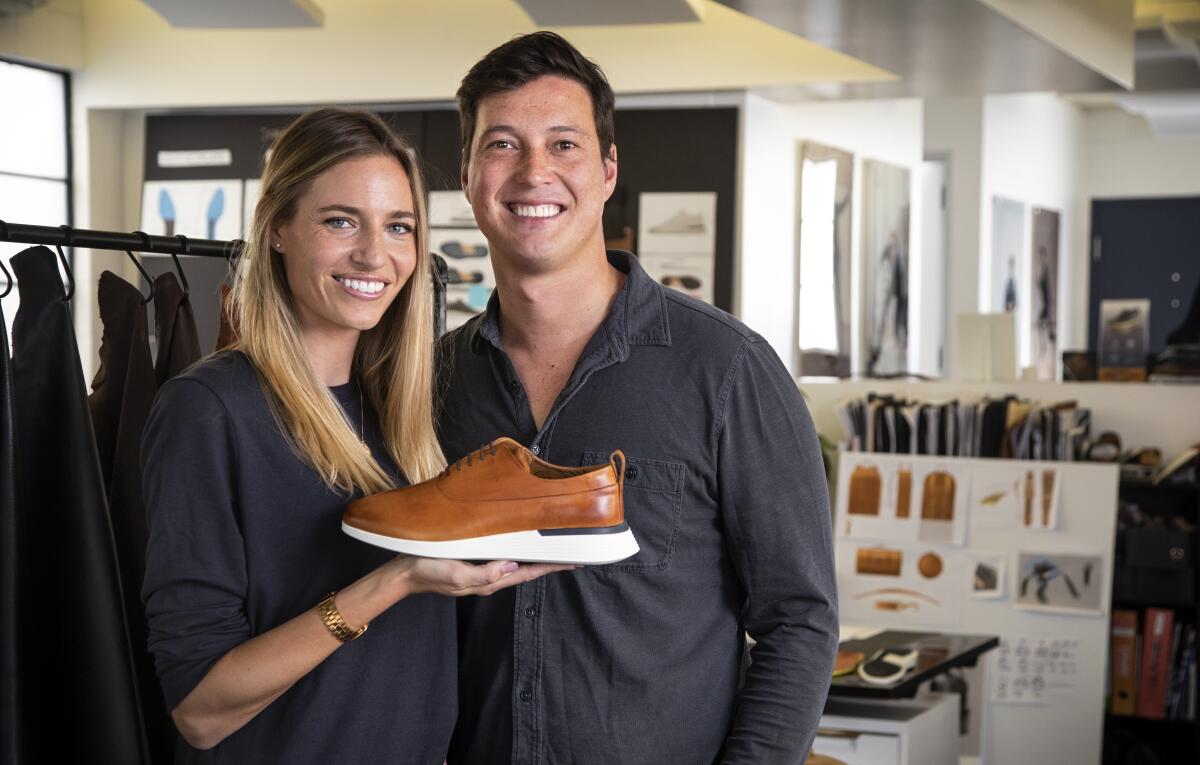
- Share via
Call him mad — or maybe just a cockeyed optimist — but Justin Schneider appears to be hopeful.
Despite the COVID-19 pandemic, which has forced iconic brands and legendary retailers to stumble or crumble (Brooks Brothers, J. Crew, Neiman Marcus and Lord & Taylor, among them), Schneider, a 31-year-old footwear entrepreneur behind the workplace-oriented shoe brand Wolf & Shepherd, is still counting his blessings.
“Having moved to Los Angeles and being the only dress-shoe company in a less formal environment,” he told me on the phone on a recent morning, “we had already asked ourselves, ‘How do we create a dress shoe for today’s working professional?’”
Wolf & Shepherd’s elevator pitch is simple. Its shoes feel like sneakers but look, on the outside, like a brogue or derby — you know, the types of styles frequently found at blue-chip law firms or financial institutions, the ones that clacked down office hallways and lobbies before the world suddenly hit pause earlier this year. These tony lace-ups were the last bastions of a certain C-suite lifestyle where suits and ties reigned supreme. However, the days of desk lunches and boardroom meetings are in a state of serious limbo. So maybe a shoe that plays both sides of the fence is, strangely, perfectly in tune with this very in-between moment.
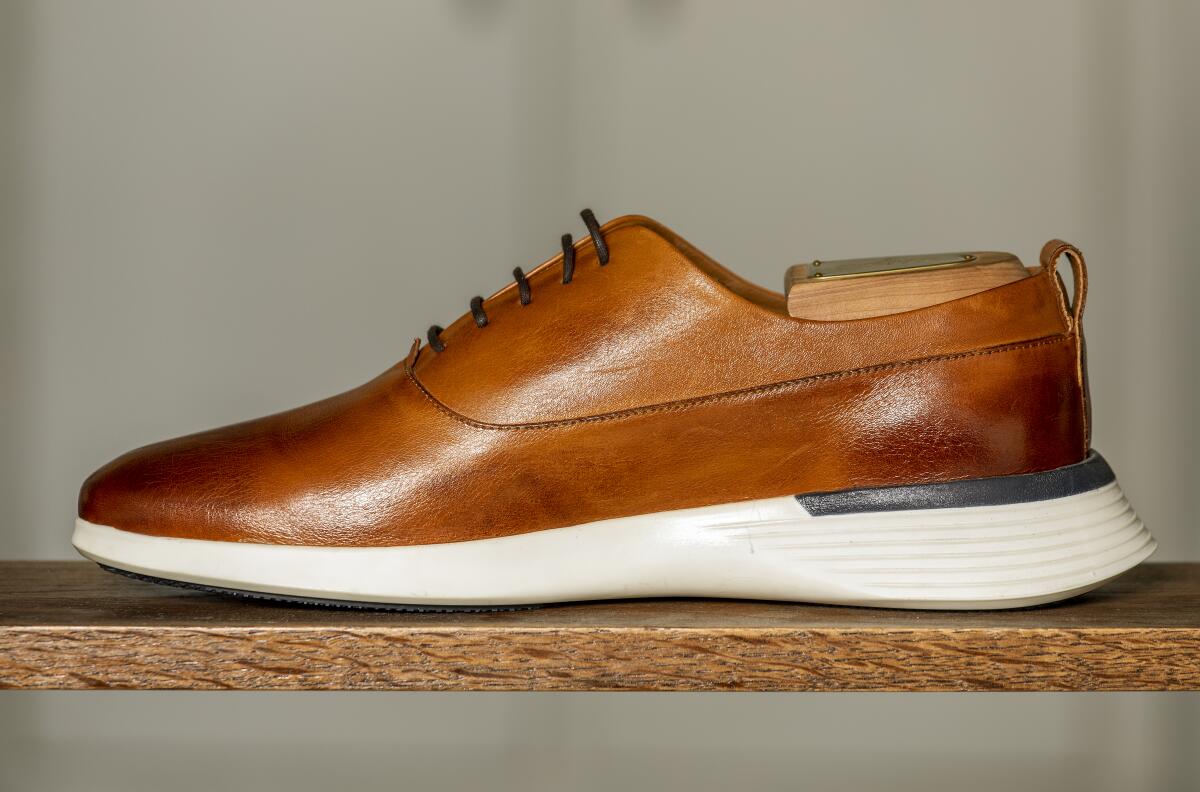
Hope Schneider, 30, the brand’s cofounder and Schneider’s wife, knew the moment things were changing well before the coronavirus pandemic hit the U.S. “When Goldman Sachs put out a memo that you don’t have to wear a suit to work anymore,” she said.
Last year, the global financial and banking firm made headlines when it said it would allow a more “flexible” office uniform going forward. It was an announcement that sparked the Schneiders’ brand to create its Crossover Longwing, a hybrid shoe with an upper made from full-grain Italian leather and contrasted with a white, high-density outsole. “If Goldman Sachs, one of the most dressy workplaces in New York, is telling their workers ties are not required, then those guys are probably looking for a formal shoe that is not Cole Haan,” she said.
Wolf & Shepherd’s Crossover Longwing, introduced late last year, sold out of its initial launch and, according to the brand, accumulated a wait list of more than 2,500 people. During June, they restocked the style with 5,000 pairs and sold more than 4,000 by mid-month. During the quarantine, it’s become one of their bestselling styles. “That hunch was right,” Hope said. “So we’re just following our intuition on what’s next.”
I first met with Justin late last year, long before pandemics, remote working and face masks were part of the everyday conversation. We toured Wolf & Shepherd’s industrial-chic space in El Segundo. The space featured glass walls and concrete floors and was furnished with boys’ club decor including tufted leather couches and oriental rugs. In one office were boards filled with inspirational images for everything — from packaging and social media to the shoes themselves — including pictures of tire treads and woven leathers contrasted with shots of the smooth curves of modern architecture.
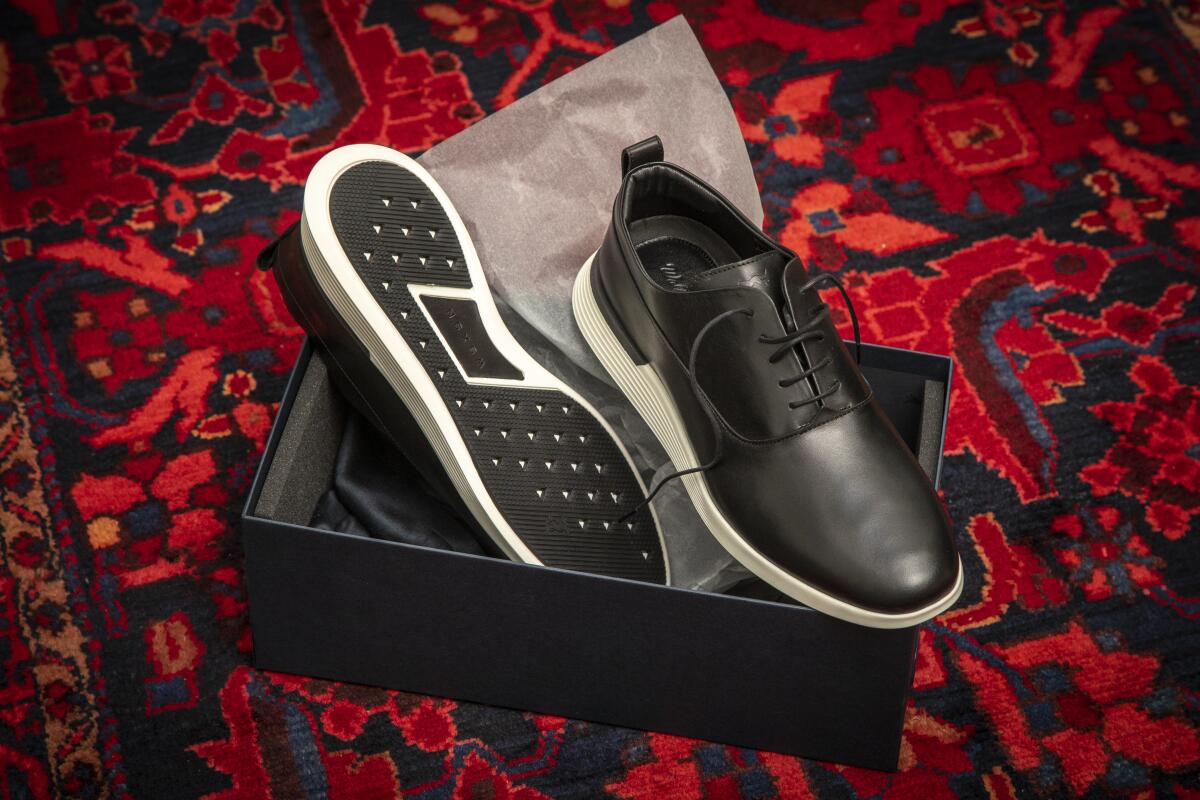
Schneider’s specialty is sneakers. He relied on them as a track-and-field athlete while at Notre Dame and helped design them for brands such as Adidas and New Balance. However, he had an appreciation for more formal fare too. “I love the timeless style of a traditional English-made dress shoe,” he said. “But then it’s like, well, I also like the raw performance of a specialty running shoe.” Therefore, he married these oppositional ideas and set off to essentially build the mullet of shoes: business in the front, party in the back.
Schneider, who is biracial (his mother is Korean and his father is white) has long been fascinated with bridging together two possibilities and did so with shoes. “I’m pretty fixated on these adversarial components and bringing them into one thing,” he said. His approach might have something to do with being the child of an immigrant and having to straddle the roles of insider and outsider. Or it might have be his time at Notre Dame, which he attended on an athletic scholarship and where he studied architecture and then industrial and product design. “Most times when people meet me, the perception is like, ‘Oh, he’s a jock or bro,’” he said. “But there’s a whole other side. I’m a creative person that happens to like to run in circles too. Why can’t I be both?”
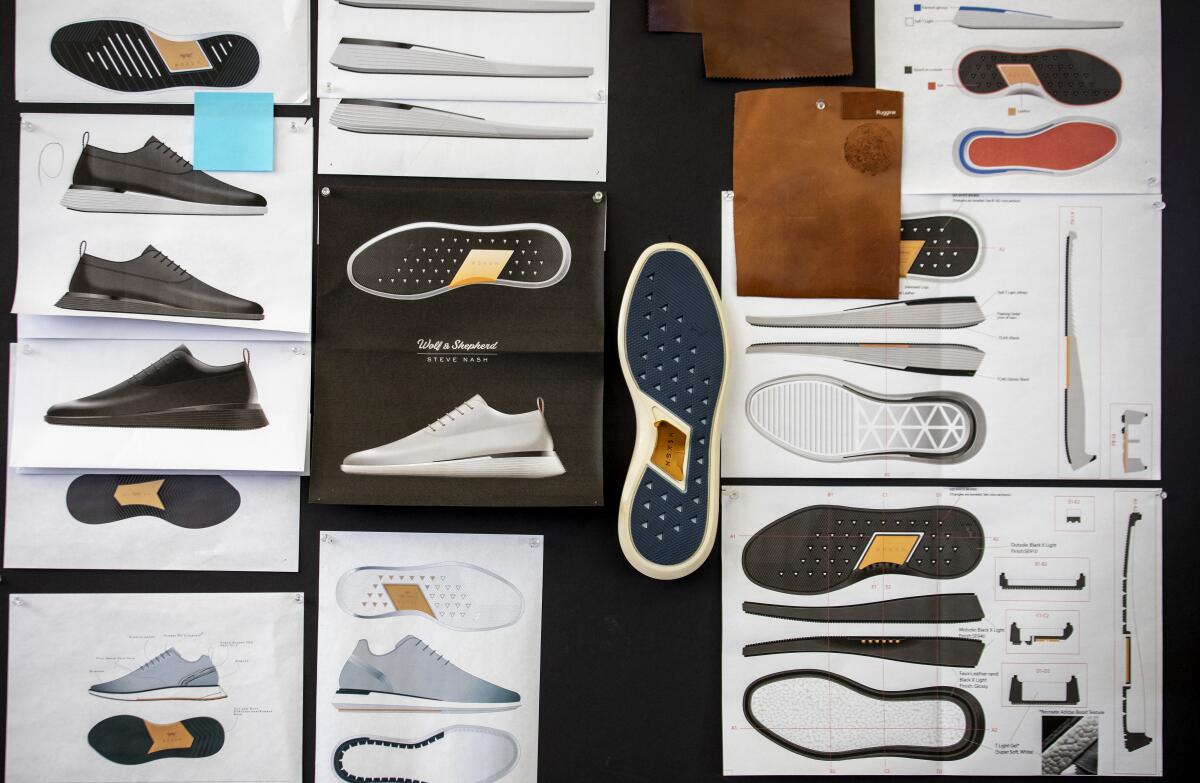
This duality plays out in the brand name: the wolf is tenacious and a hunter, the shepherd is a wise sage. “If every brand is selling a fantasy, ours is that you can have innovation and tradition,” Schneider said. “You can have comfort and style. You can be premium and mass market. You can be good-looking and intelligent.”
Schneider started his career with an internship at Adidas and later worked for New Balance, designing running shoes. After a career detour working for National Geographic, he returned home to Atlanta, and it was there that Wolf & Shepherd was born. It started innocently enough. A pal complained to him after spending $575 on a pair of dress shoes only to discover they were incredibly uncomfortable.
“He’s like, ‘My feet are killing me, Justin. You’ve designed running shoes. You just need to come up with a pair of comfortable dress shoes,’” he said, laughing. “Like that’s the easiest thing in the world or the most novel idea.” Dress shoes are, by nature, uncomfortable. They’re made from hardy materials made to last and which require wear for them to eventually break in and achieve optimal comfort.

Schneider’s friend had inadvertently alerted him to a hole in the market. “Most dress-shoe companies were built on the old adage of, ‘This is how things have always been done.’ They’re built on the idea of being made in Italy or made in America, all this nostalgia,” he said. Tradition and heritage are the foundation for these companies, not innovation, which governs optimization-obsessed industries such as tech and fitness. Schneider had an idea: Could he bring the two worlds together?
“I took that literally,” he said. “I took it seriously, and I approached it as I would a track spike or a trainer. What’s an attractive heel-to-toe ratio? Let’s take a really attractive shoe, and can I make it feel like a sneaker?”
That challenge led him to start working on prototypes for his first shoe. When asked if he’s entrepreneurial by nature, he said, “I like to do things to get better at them. I’m just competitive in the sense that when I see something awesome or somebody do something really cool, I just go, ‘We can do that. What do we need to do to make something better or bigger?’ I don’t want Allen Edmonds to fail because we’re in business. I want to use them as a benchmark of what I need to overcome.”
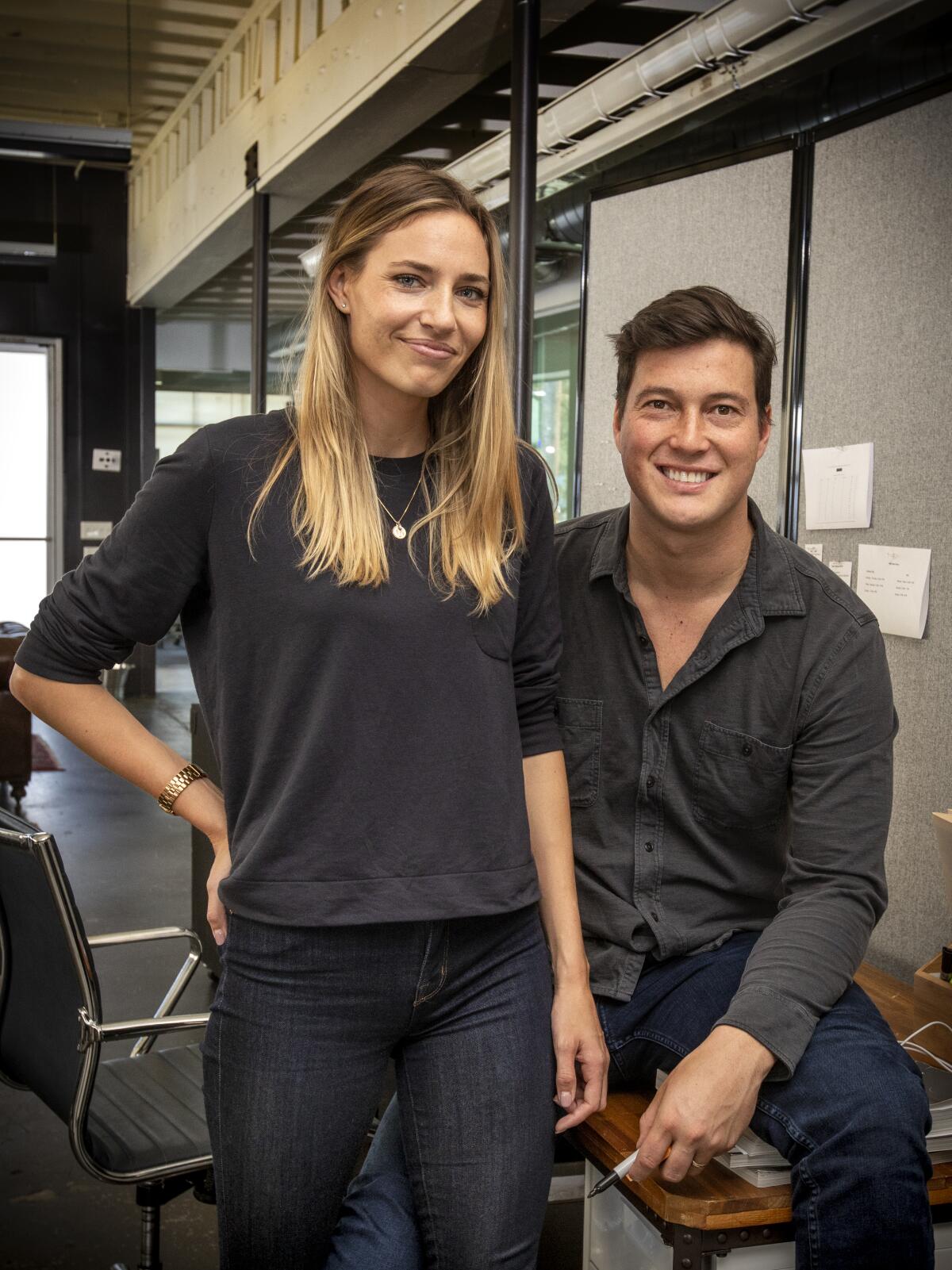
Five years after founding his business — before the coronavirus hit — things were going well. Schneider had a store on Madison Avenue in New York and one in Los Angeles at the Westfield Century City shopping center. The brand was bringing in millions in revenue and had NBA star Steve Nash, whom Schneider met through a mutual friend, as an ambassador and a collaborator. (“I used to wear his shoes growing up,” Schneider said. “Now he wears mine.”) Wolf & Shepherd was making a splash with social media stunts such as having Juris Silenieks run the Atlanta half-marathon in a pair of Wolf & Shepherd cap-toe lace-ups (he won the race) or Nash play a pickup game of basketball in a pair. Also, last year, Schneider himself took part in the running of the bulls wearing Wolf & Shepherd shoes, and Chris Rock wore a pair of the shoes to this year’s Academy Awards.
And then everything changed in 2020 — most of all, it was the way that we work, which was Wolf & Shepherd’s raison d’être. The Schneiders had to pivot. They decided to build on the success of their more casual releases such as the Crossover Longwing and the minimalist Glider sneaker. Last month, they debuted the SwiftKnit, which has a knit upper. It’s their version of the popular Allbirds style of shoes.
For now, some of their original styles, the boardroom-friendly wingtips and cap toes, are on final sale as much as half off. (Prices for Wolf & Shepherd shoes generally range from $179 to $289.)
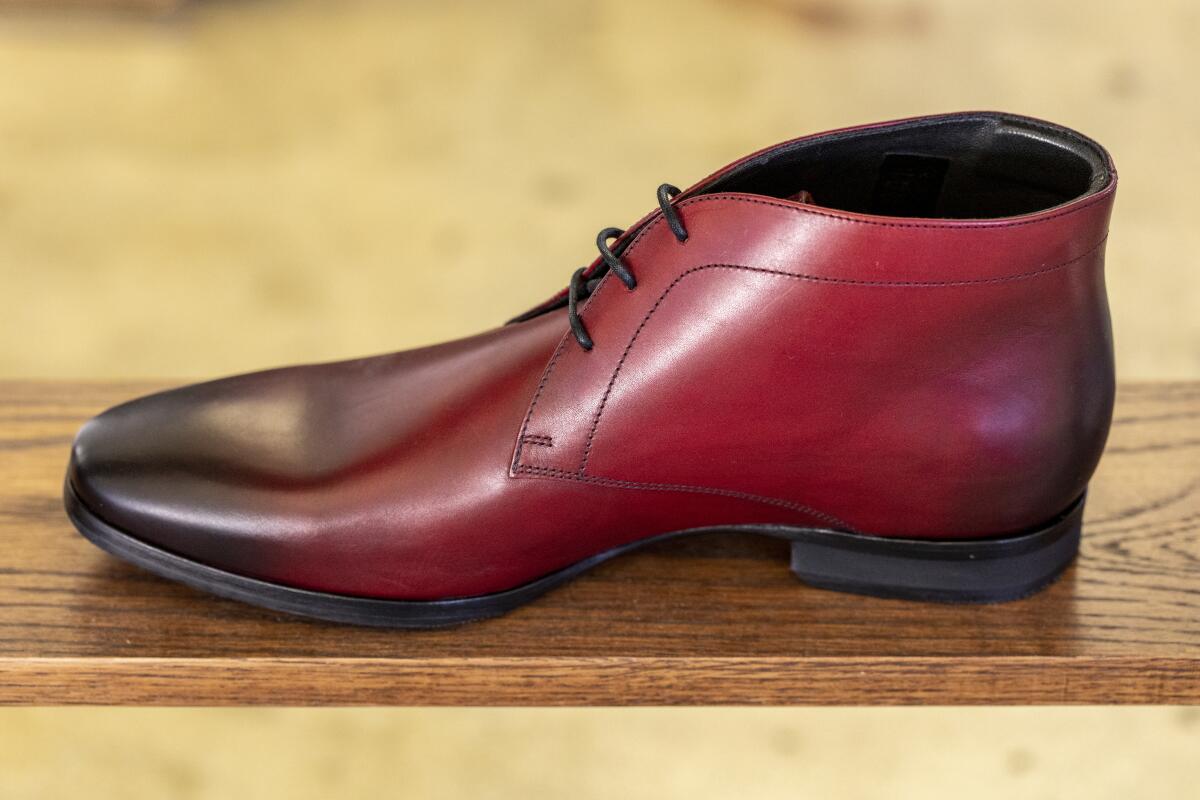
According to Schneider, the dress shoe isn’t going down without a fight. He said the number of customers adding them to their carts on the Wolf & Shepherd website has “never been higher.” It’s just that they’re leaving them there for some far off day when people return to their work cubicles and pick up some semblance of the life we knew before. “There’s always going to be a consumer who wants to dress up,” he said.
He’s on to something. When some sort of normalcy is restored, the thinking goes, cooped-up citizens deprived of the simple act of expressing themselves through clothing will embrace the joys of dressing up again. Before the coronavirus, there were hints of a return to formality with men’s suits and loafers starting to gain traction again. It’s the natural response to years of a market dominated by streetwear and sneakers. Therefore, months stuck inside may be the impetus for people to dress again.
All of which is to say, these are strange times, and no one can truly say what the future will hold. Which is why I was surprised to find the Schneiders sounding so cheery when we reconnected.
“Any founder of any company probably wouldn’t make it very far if they weren’t optimistic,” Hope said.
More to Read
Sign up for The Wild
We’ll help you find the best places to hike, bike and run, as well as the perfect silent spots for meditation and yoga.
You may occasionally receive promotional content from the Los Angeles Times.










